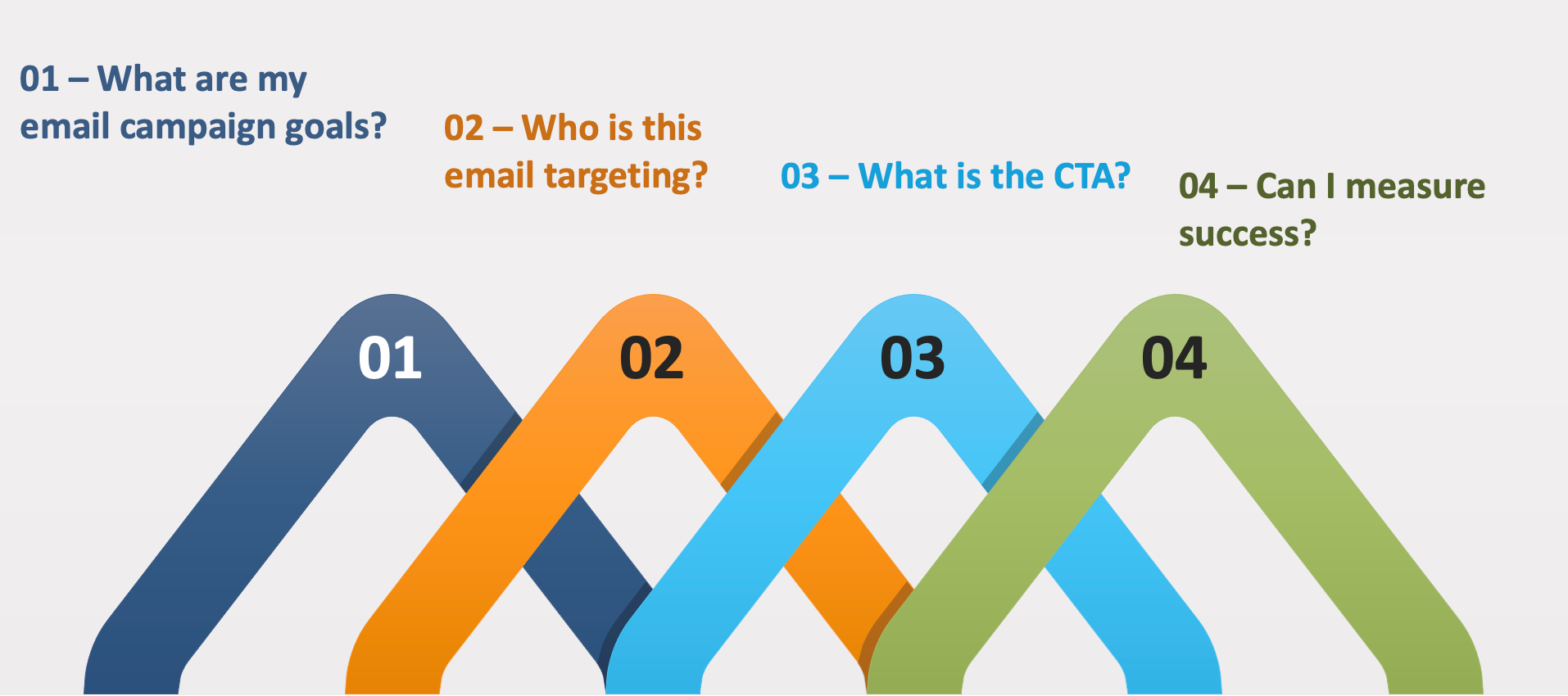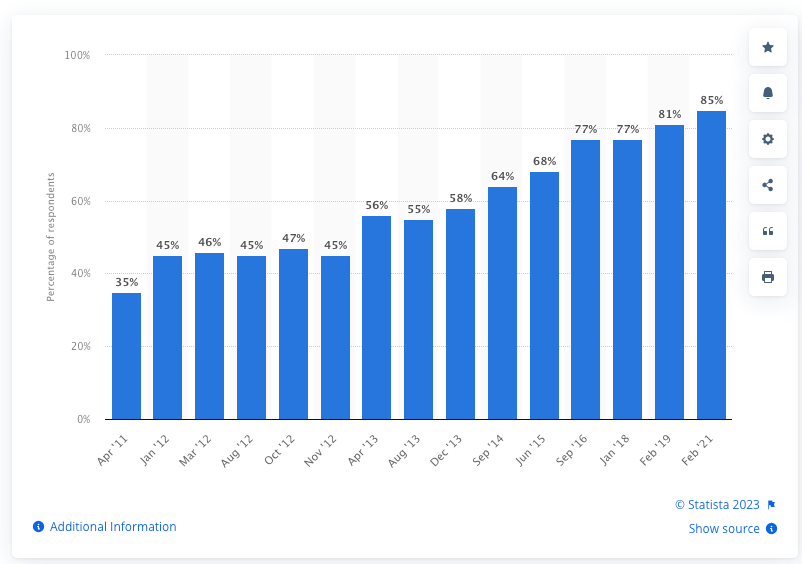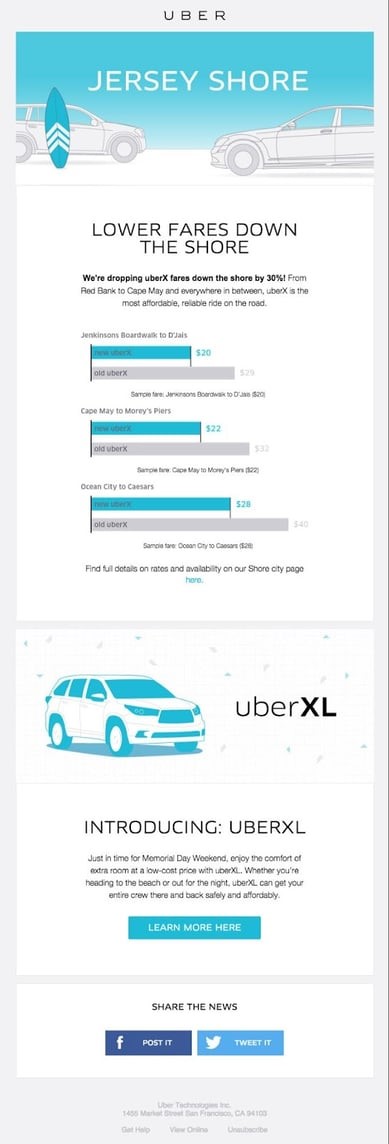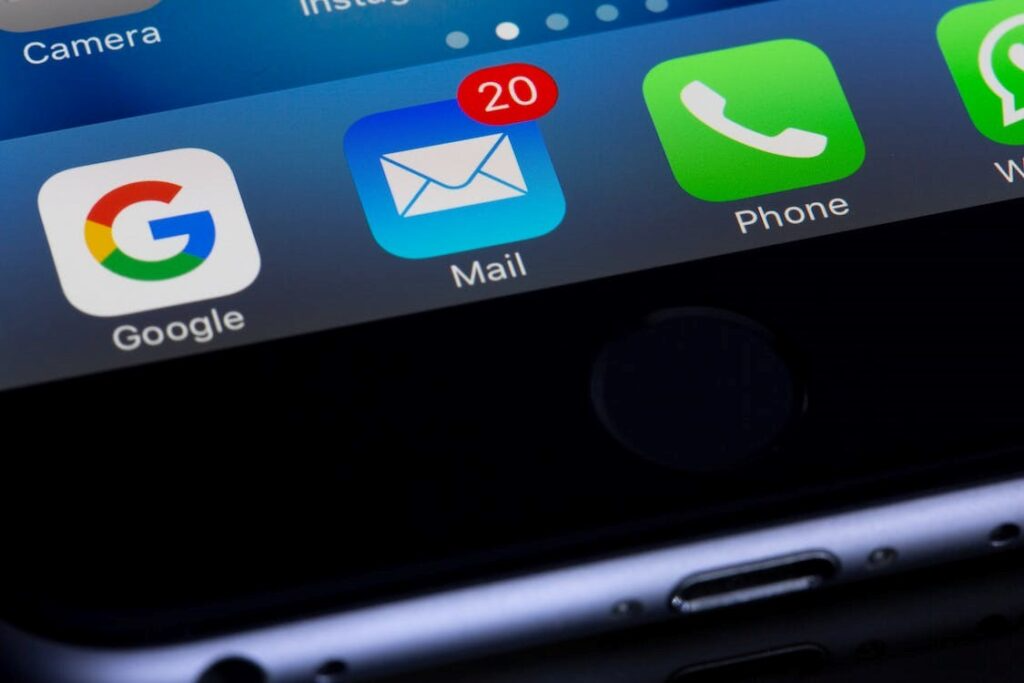In today’s age, marketers have a plethora of choices when it comes to communication channels. And email is one of the most popular. It helps gather leads and increases the chances of retaining customers, which is one of the most important goals for businesses. After all, retaining happy customers increases the chances of them bringing in more clients for you and eventually becoming advocates for your brand.
However, some email marketing campaigns are designed quite poorly. They don’t feel attractive or cohesive, and this can damage a company’s reputation. When designed poorly, it also means that emails can go straight to the dreaded spam folder – voiding all your email marketing efforts.
As your recipients’ inboxes begin to fill with emails from various brands, you’ll find that your business will need to strengthen its email marketing strategy to ensure that you stand out from the crowd. You should also take some time to be aware of common mistakes businesses make when it comes to email marketing so that you can avoid them and stay relevant and modern to your audience.
Why are email marketing mistakes so common?
You may think that email mistakes are difficult to make because emailing is simple – create it and hit send. And although this is true to a certain extent, it’s important to note that emails have become much more technically sound today. In addition to this, email frequency has decreased – recipients want quality over quantity.
So, when you are creating an email for your customers – you should know the answer to a few questions before getting started:
- What are the campaign goals?
- Who is this email targeting?
- What is the CTA (call-to-action) in the email?
- Can my email marketing software measure metrics like audience engagement or open rates?

Design by PresentationGO.com
If you dive into email marketing without the answers to these questions, you’ll quickly start to see small email marketing mistakes occur. This happens when your email marketing campaign needs a clearer vision. This leads to irritated customers who may unsubscribe and even stop supporting your business in the long run. This is why it’s imperative to acknowledge common pitfalls in email marketing and learn how to avoid them from day one.
10 Common Email Marketing Mistakes and How to Avoid Them
Below are a few common email marketing mistakes to avoid. When analyzing these common mistakes, read the resolution and place these into your email marketing strategy.
1.Lack of personalization
The first mistake, which is possibly the most common one, is all about a lack of personalization when it comes to email. Businesses tend to overgeneralize and send the same email to every subscribed customer. Although this may have worked a few years ago, it doesn’t work in today’s marketing world. Why? Because consumers expect personalization today. Fortunately, with premium email marketing platforms, you can personalize emails and automate the entire process.
Personalization works based on gathered data from your email recipients. The concept of a tailored solution increases the chances of audience engagement with your emails; recipients will feel more appreciated by your brand because you’ve taken the time to understand them. And when your customers start to feel understood, seen, and heard, they start to have an increased perception of you.
Here are a few ways in which you can personalize an email:
- Use customer segmentation.
- Analyze browser history.
- Deploy triggered emails for welcomes, reminders, etc.
- Use birthdays and anniversaries.
- Use personalized content.
2. Poor subject lines and preheader texts
We all receive a heap of emails daily. As a result, it’s easy for recipients to glaze over some emails. This is usually because the email subject line and preheader text aren’t powerful enough to catch the eye of the reader. This is dangerous as your email could be deleted, and many others that don’t seem attractive.
The trick with subject lines and preheader text is to ensure that you make them attention-grabbing but not to the point where they sound like spam. For example, if you have an email with the subject line, “Generate six-figure revenue in the next month!” it sounds too good to be true – and it probably is. You want your subject line to be enticing and valuable.
Here are some guidelines to stick to when writing a subject line:
- Make it valuable – share a new product/service/offer for them.
- Don’t trick people with information in the subject line that doesn’t exist in the body of the email.
- Keep it short and sweet – stick to the point.
- Keep the fluff to a minimum – don’t use filler words.
- Avoid using all caps.
- Personalize it!
3. Neglecting mobile optimization
Statista shared that 85% of American adults will own a smartphone in 2021. It’s a massive percentage, and the truth is that people love doing anything and everything on their phones – including reading emails. This is why a common email marketing mistake is when businesses choose not to optimize emails for mobile.

Image Source: Statista
There’s nothing worse than opening an email on your smartphone and seeing that half the imagery and text are cut off on one side. As a business, you need to be sure every email, images, links, and text, is optimized for every device out there. Your email marketing platform can assist with ensuring that all your technical requirements are adhered to.
Here are a few ways in which you can check that your emails are optimized for mobile:
- Use a short subject line.
- Include preheader text.
- Use thoughtful images.
- Keep your CTAs central and make them stand out.
- Leave room for clicks and scrolls.
- Test emails across multiple devices.
4. Overwhelming or inconsistent design
Creating emails is quite simple to do. But it doesn’t mean that more means better. Another common mistake is when businesses add too much text and imagery to one email.
It may seem like you’re getting more bang for your buck – adding more information at once to streamline the process, right? Wrong. You must ensure that each email has a consistent template and uses your logo, brand colors, and image style consistently. Moreover, you should pick images carefully and strategically. White space is also very powerful in emails.
Here’s an example of a well-designed email:

5. Lack of clear call-to-action (CTA)
A common email marketing mistake is when people forget the purpose of their email. Remember those goals that we talked about earlier? They’re really important to understanding how and what you want the recipient to do. CTAs also provide a measurement for you to keep track of how many people clicked your CTA button and followed through with it. This is a great way of understanding how well your campaign is doing and how effective that CTA is.
Here are a few best practices when it comes to adding a CTA to your email:
- Check that the CTA is front and center.
- Ensure the entire button is clickable, not just the CTA text.
- Focus on one action only.
- Surround your email body text to build up to your CTA.
6. Including too many images
We spoke a bit about images in the design point above. But too many images are a really common email marketing pitfall. This is because it makes the email a bit too busy, and the body text can get lost within the images.
Too many images also mean that loading times for emails are longer – this is something you definitely want to avoid. The last thing you want is to have a reader delete your email because it’s taking too long for the images to load.
Regarding mobile, you should always check if image sizes are small enough to load quickly. Some recipients will have a “download image” option enabled, so you want the few images you have to be able to download in a second or two. It’s also a good idea to add descriptive/alt text to images. This will display even when email images are blocked from being instantly downloaded.
Here’s a pro tip: Keep the total image weight anywhere from 600KB to 800 KB. Images should be saved in JPEG or PNG format to reduce the file size.
7. Sending emails at inappropriate times
This common email marketing mistake occurs mainly because business owners don’t consider it an option. Yes, you can send emails at specific times, and there is a strategy behind when you can and should send them.
There are many theories about the best time to send an email. But remember that each business has its flavor, style, and product/service. And it’s important to understand that what may work for some brands may not work for others. So, instead of trying to follow the best practices of big brands, it might be prudent to test emails at different times and see which ones yield the best results.
Here’s a tip on timing: You can measure each campaign and note when each email goes out. Then, track the results of each email and go with which one works best.
8. Not including a share button
Keeping customers coming back for more is something you need to add to your email marketing strategy. One mistake that many brands make is not including a share button. It’s such a small and simple step – but share buttons are so convenient.
Don’t you ever feel the need to share a specific product with a friend from a brand’s email? Simply click “share,” choose your communication method, and go. There’s no better way of doing so. If you have shared your emails, it’s another useful metric to track to find out how engaged your audience is.
Here’s a share button tip: Add it beneath the most useful information in your email. This can be anything from an exclusive offer to a secret ingredient. This content is most likely what a reader will want to share with friends or family.

9. Failure to maintain email list hygiene
The next common pitfall is one that many companies make – not shaving off the excess when you need to.
Here’s the deal – email contact lists can get very long quickly. And getting subscribers is great – it makes you feel accomplished and excited about your communication strategy. But it’s a good idea to do some pruning every now and then. Why?
Well, you will end up with subscribed customers who, at the end of the day, have stopped opening your emails. Sometimes they’ve even begun reporting them as spam. This is why you need to clean up your contact lists every quarter. This may sound the opposite of what you’re supposed to be doing (engaging your customer), but they’re actually costing you money if a customer isn’t engaged.
How can you clean up your email contact list?
- Evaluate all inactive recipients.
- Evaluate readers who consistently avoid opening your emails.
- Email prompting these inactive users to unsubscribe.
The idea is to focus on the engaged and build them up to becoming advocates for your brand.
10. Neglecting email testing and analytics
In order for you to generate consistent and successful email marketing campaigns, you need to use your email testing and analytics features. Your email marketing software should help you with this, and you should measure each and every campaign that is sent to your audience.
This is a step many marketers choose to omit – but it is one of the most important steps in email marketing. You need to know what you’re doing right and wrong for your audience. Then, avoid the negative and do more of the positive. The more you listen to the results from your recipients, the better your marketing campaigns will be.
Another good idea is to test every email before broadcasting it to your contact list. A small test can ensure that your email loads on various devices on Android and iOS. Small things count here, so don’t let this step fall through the cracks.
Here are a few pro tips when it comes to testing and analytics for email marketing:
- Test emails on multiple devices and software types.
- Ensure your email marketing platform supports reporting and analytics.
- Check that each email has a specific CTA that is tracked for measurement.
- Measure click-through rates and open rates regularly.
- Measure your email performance based on varied times of day in which the mail was sent.
FAQs
1. How can I prevent sending too many emails to my subscribers?
There’s no specific number, but as a direct rule, readers expect at least one promotional email per month. This varies based on the industry, as retailers may send emails once a week.
2. What are some tips for personalizing email content effectively?
Add their name, use segmentation, send emails on anniversaries, deploy triggered emails, and use personalized content based on behaviors.
3. What should I do to create compelling subject lines?
Learn from successful subject lines, keep it short, segment your lists, and add personalization.
4. How can I effectively segment my email list?
Segment based on new customers, loyal customers, most engaged customers (e.g., high open rates), regular buyers, inactive customers, etc.
Get the full story here:



1 thought on “Email Marketing Mistakes to Avoid: Common Pitfalls and How to Overcome Them”
Comments are closed.